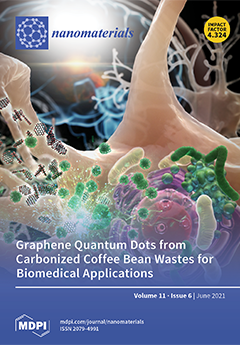We studied the influence of water on the structural stability and transformations of MAPI and FAPI by anelastic and dielectric spectroscopies under various temperature and H
O partial pressure protocols. Before discussing the new results in terms of interstitial water in MAPI
[...] Read more.
We studied the influence of water on the structural stability and transformations of MAPI and FAPI by anelastic and dielectric spectroscopies under various temperature and H
O partial pressure protocols. Before discussing the new results in terms of interstitial water in MAPI and FAPI, the literature is briefly reviewed, in search of other studies and evidences on interstitial water in hybrid halide perovskites. In hydrated MAPI, the elastic anomaly between the cubic
and tetragonal
phases may be depressed by more than 50%, demonstrating that there are H
O molecules dispersed in the perovskite lattice in interstitial form, that hinder the long range tilting of the PbI
octahedra. Instead, in FAPI, interstitial water accelerates in both senses the reconstructive transformations between 3D
and 1D
phases, which is useful during the crystallization of the
phase. On the other hand, the interstitial H
O molecules increase the effective size of the MA and FA cations to which are bonded, shifting the thermodynamic equilibrium from the compact perovskite structure to the open
and hydrated phases of loosely bonded chains of PbI
octahedra. For this reason, when fabricating devices based on hybrid metal-organic halide perovskites, it is important to reduce the content of interstitial water as much as possible before encapsulation.
Full article






